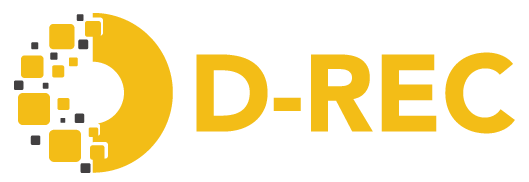frequently asked questions
General FAQ
How are D-RECs different from existing energy attribute certificates (EACs)?
D-RECs, like any other EAC, are an accounting instrument that reliably tracks the generation of renewable energy from their origin to one final consumer.
However, unlike other existing EACs, D-RECs are entirely composed of energy generated by distributed renewable energy. As a result, D-RECs can have additional social-economic and climate impacts compared to EACs composed of energy generated solely from utility-scale renewable energy assets.
See the Benefits section of the website to find out more.
How are D-RECs different from carbon credits?
D-RECs are a form of energy attribute certificate and therefore track and validate the generation of renewable energy. It does not, however, track the carbon emissions avoided or abated by this renewable energy. As such, D-RECs are made up of kWh of electricity generated and not tonnes of carbon.
In the future, the D-REC Platform may support the generation of carbon credits, however, this is not currently the case.
See the video below where Ricky Buch, Technology Lead at the D-REC Initiative, explains some of the differences between carbon credits and RECs.
Developers FAQ
01
How can I connect to the D-REC platform?
We have developed an API to allow a live connection to be formed between external data systems and the D-REC Platform. Via this API, data can be automatically sent to the D-REC Platform to then allow D-RECs to be issued. We also allow manual upload of generation data for devices.
We are currently inviting a select group of developers to connect to the current version of the platform. The next version is due to be issued by the end of Q2 2023, at which point the platform will be open to all to connect and begin issuing certificates.
Please see the technical documentation in the Media section to find out more.
What renewable assets are eligible to be connected to the D-REC Platform?
The definition of distributed renewable energy is often subjective and variable. The D-REC Initiative defines distributed renewable energy as assets typically up to 1 MW in capacity. These assets will typically be providing energy in the location in which they are installed. We allow both off-grid and grid-tied assets to connect to the platform.
There is no minimum capacity per asset required to connect the platform. However, project developers will need to consider the overall amount of energy they are able to generate from their assets and whether this energy when aggregated will be able to form multiple D-REC certificates.
Currently we are only supporting solar assets, but this will extend to wind and hydropower in the near future.
03
Are there any technical requirements to be able to issue D-RECs from my projects?
Technical requirements of using the D-REC Platform:
- Generation meter data
- Ideally, remote monitoring capabilities
- Payment events for PAYGO solar devices (these will be translated to generation data in Q3 2022)
- Ability to use the D-REC API to push generation data to the D-REC platform for aggregation and issuance of D-RECs
- There is no minimum device size required for connecting to the platform.
The main requirement to connect to the D-REC Platform is to have access to electricity generation data from your distributed renewable energy assets. This can then be uploaded to the platform to generate D-RECs.
Typically, this upload of data should be automated via connecting the D-REC Platform’s API. However, manual data upload is also possible. Data is required to be uploaded from a device at least once every 30 days.
Full technical documentation for the D-REC Platform can be found within the Media section of the website.
Buyers FAQ
01
How can D-RECs be used against corporate social responsibility and climate targets?
By buying D-RECs, consumers can claim the environmental attributes of distributed renewable power generation in a way recognised by all major sustainability reporting initiatives. The certificates can then be used to offset Scope 2 emissions, the indirect emissions associated with the purchase of energy. Alternatively, D-RECs can be used as a way of accounting and validating offsetting Scope 3 emissions, the emissions from within your supply chain.
Please get in touch if you would like to find out more.
02
How can D-RECs be used to target specific sustainable development goals?
Distributed renewable energy technology, such as solar home systems and mini-grids, are highly deployable in comparison to utility-scale projects. As such, they can be found in many settings including in rural communities, healthcare facilities, education facilities, supporting SMEs and more.
As such, each D-REC is unique in the positive impact it represents. When sourcing D-RECs, these positive impacts can be targeted to ensure your renewable energy procurement is having the specific impacts you are looking for in line with existing CSR/sustainability strategies.
How can I purchase D-RECs and how are they priced?
D-RECs are available for purchase via market participants within the D-REC ecosystem. Please get in touch if you would like to find out more.
D-REC prices vary depending upon the underlying technology, location, and impact of electricity generated. As such, D-RECs can often be sourced in line with specific price ranges where required.
In which countries are D-RECs available?
D-RECs are available from almost any country within the ‘Global South’, where the disparity in access to energy is the greatest. Please get in touch to find out more.
05
Is D-REC a new environmental standard certification?
D-REC itself is not a new environmental certification standard. Instead, D-RECs will be issued via existing internationally recognized standards, the first of which is the I-REC Standard. When issued via the I-REC Standard, the D-REC Platform will facilitate the creation of I-RECs from the distributed renewable energy devices connected to the D-REC Platform.
